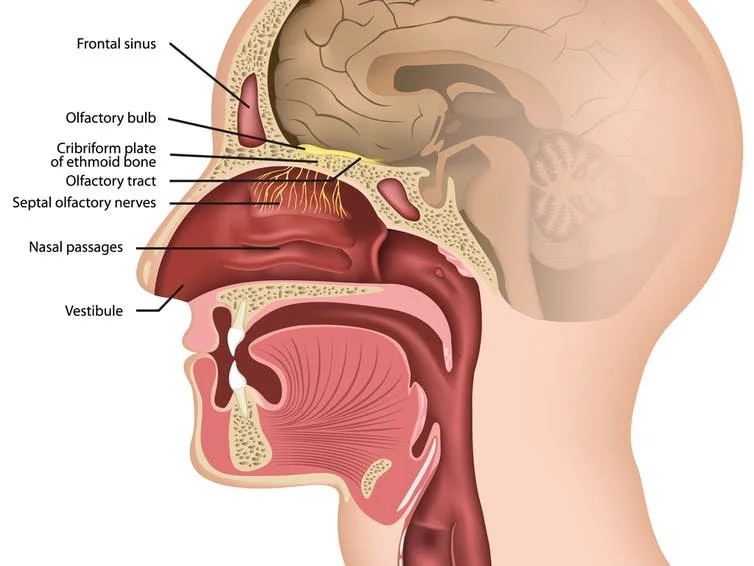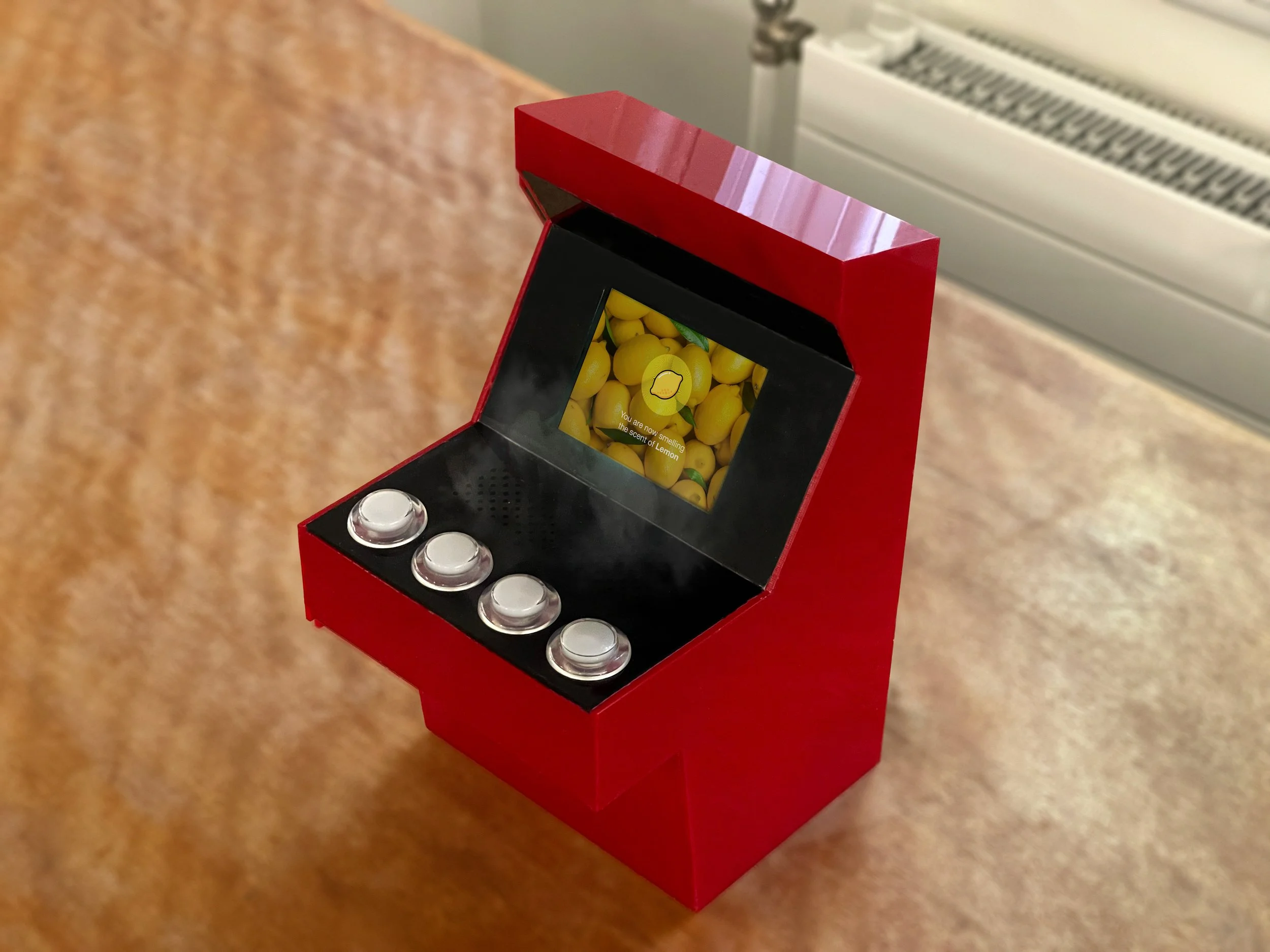Seent
Interfacing Gamified Olfactory Training
Olfaction plays an important role in daily life, ranging from safety perception to psycho-social functions and enjoyment of food and drink. However, Olfaction has been less appreciated, because people take it for granted - we really do not know what we have got until it is gone. Covid-19 brings our attentions to the sense of smell. It has been estimated that 25% of covid survivors reported loss of smell. Sufferers often talk of a declining quality of life, including changes in appetite or body weight, chemo-sensory disturbance, feeling isolated from the world around them, and experiencing a ‘blunting’ of the emotions. Additionally, not only because of covid, there are many factors that also lead to smell loss, including: aging, poor air quality, smoking, and exposure to radiation or chemicals.
Empirical studies have suggested that conducting smell trainings helps smell loss people regain their smell. In this project, I explored a gamification of smell training. By visualizing and digitalizing odors, Seent aims to make the process of smell training more user-friendly, accessible and playful.
Sense of Smell & Smell Loss
Photo source: shutterstock
Smell, also called olfaction, is a chemical sense in that the signal for the sense is a molecular chemical or ion which stimulates receptors in the nose. Once an odour is detected, the olfactory neurons located in the upper part of the nose generate an impulse which is passed to the brain along the olfactory nerve. Olfactory bulb is the part of the brain where the impulse arrives at first. It serves to process the signal and then passes information about that odour to other areas closely connected to it, collectively known as the limbic system.
It is estimated that more than 60% of those contracting Covid-19 are affected by smell loss, the major cause of it lies at the level of the olfactory neuroepithelium. The persistence of olfactory dysfunction in these cases may be attributed to a larger area of the olfactory epithelium being affected by the coronavirus. The current data suggested that the remaining symptom happened to 10% to 17% of patients after 4 weeks. Nevertheless, smell loss can happen to ordinary individuals as well. Main factors that lead to smell loss include: poor air quality, smoking, exposure to hazardous chemicals, abuse of drugs, and allergies.
Smell Trainings & Science behind It
Current smell training is solely based on repetitive exposure to certain scents(Rose, Lemon, Clove, Eucalyptus). The number and types of scents are based on empirical clinical research. Typically the above scents are used because they are very common, pleasant to smell and have a strong smell.
The process of smelling starts with neurons in the olfactory epithelium. Unlike the other sensory systems, these receptor cells are actual brain cells, whose axons connect directly to the brain center. Those cells are capable of regeneration which occurs about every 5 to 8 weeks. This regeneration process is the foundation of smell rehabilitation for smell loss people. Constantly and regularly stimulating these cells helps the olfactory system function normally.
Photo source: britannica
Gamification
Micro-games or mini-games, were commonly described as short, self-contained, naughty, educational, and simply logical. They are widely applied to educational training. It is very useful for students to acquire knowledge without noticing it. Previous research indicated that micro-games improve visual memory and short-term memory of the students. Micro-games that are used to provide conceptual information often rely on the retention of information. This feature is consistent with the mechanism of smell training.
The gamified training starts with a scent recall session where four distinct scents will be realised one by one with visual aids accordingly. In this stage, users try to trigger their scent memories. Next, a random scent which was appeared in the previous stage would be released and the users would be asked which one they just smelt. This stage is so called test session. The last session is feedback session. If the users recognised the scent correctly. They will proceed to the next round, otherwise, the right answer will be displayed on the screen with a re-delivery of the scent.
The complexity of the game comes from different scent combinations. In the first level, the four scents are from the conventional smell training - rose, lemon, clove and eucalyptus. In the second level, users are required to distinguish 4 scents under the same category that is derived from level one. The difficulty increases because some scents under the same category are quite similar for example, grapefruit and orange. If the first two levels are like open book exam, level 3 is more like a close-book exam since users must be familiar with the previous scents. No visual aids will be provided in this level. In each game session, users are asked to recognize 4 scents that are from previous two levels in a mix.
System Overview
To make the process of smell training a game, I designed a arcade-game-console-like device. In the front, there are a 5 inch HDMI display and 4 push buttons with the arcade style. Those buttons allowed the users to select a scent when they were asked, as well as to control the menu. Above the buttons are an array of hole, through which, smells could be delivered to the users. Those smells were produced by four atomizers. Each of them could vaporize a distinct scent that was used for smell training.
Digitalisation of Scents
The gamification of smell training requires the digitalisation of scents. The atomizers can produce constant and steady aroma flow. Trainers could therefore really focus on feeling scent itself and do not need to care about timing and concentration of the aroma. Besides, this digitalisation makes the connection between the digital game interface and physical odour delivery possible - the odours can be released according to the manipulation of the users during the gameplay. By replacing the essence oils in capsules, the complexity and variety of the game can be achieved. Another benefit of this design is that users can refill it easily.
Visualisation of Scents
Visualisation of scents provide users with visual aid. It is necessary because for those whose olfaction systems have been badly damaged, they had no idea what they are smelling during the scent memory process. Visual aid, together with corresponding scent delivery help users trigger their scent memories. The visual aid is a combination of pictures of real objects, icons, and color schemes. From previous research, the perception of scents are massively affected by vision. This multi-modal stimulus can enhance users’ odor memories. In the meantime, The screen can display proper instructions in the training process.
Qin, L., 2024. Seent: Interfacing Gamified Olfactory Training. In The 37th Annual ACM Symposium on User Interface Software and Technology (UIST Adjunct ’24), October 13–16, 2024, Pittsburgh, PA, USA. ACM, New York, NY, USA. DOI:10.1145/3672539.3686356
by Ling Qin
Jan. 2021 - June 2021












